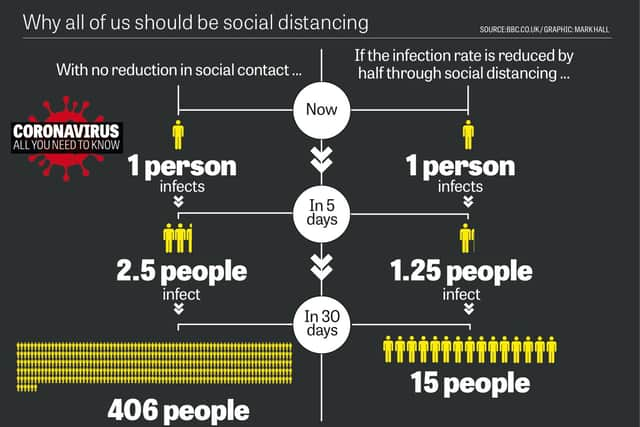South Tyneside named in top 20 coronavirus 'hotspots' for recent weeks
and live on Freeview channel 276
New Government figures show that, between May 9 and May 23, the borough has the 19th highest rate of infection in England with a rate of 46.4 cases per 100,000 people.
With the number of new cases on the decline, the new Test and Trace measures ease blanket restrictions nationally but focus attention pockets of the country where the virus continues to spread.
Advertisement
Hide AdAdvertisement
Hide AdThe figures – from 313 council areas – show that, in South Tyneside’s population of 150,976, there were 666 recorded COVID-19 cases up to May 9 and 736 by May 23 – an increase of 70.


Neighbouring Sunderland ranks 129th on the list with a figure of just 18.7 cases per 100,000 people in the same period.
From its population of 277,705, 1,322 people were found to have had the virus by May 9, rising to 1,374 on May 23.
Lockdowns on towns which see spikes in infection rates are set to be part of the ‘test and trace’ system introduced in England on Thursday May 28.
Advertisement
Hide AdAdvertisement
Hide AdHealth Secretary Matt Hancock said: “We have a system with a combination of Public Health England, the new Joint Biosecurity Centre and local directors of public health, who play an absolutely crucial role in decision-making, to make sure if there is a local flare-up, we have a local lockdown.”
The new Test and Trace system means anyone with symptoms of coronavirus should isolate immediately for at least seven days and anyone else in the household must self-isolate for 14 days.
They must order a test immediately at www.nhs.uk/coronavirus or call 119 if they have no internet access.
If the test is positive, they must complete the remainder of your 7-day self-isolation. Anyone else in household must also complete self-isolation for 14 days.
Advertisement
Hide AdAdvertisement
Hide AdIf the test is negative, no-one in the household need to self-isolate
Anyone who has tested positive for coronavirus, will be send a text, email alert or called with instructions of how to share details of any people with whom they have had close, recent contact.
Anyone who has been in contact with someone who has tested positive will then be informed and told to begin self-isolating.
People in their household doesn’t need to self-isolate but they must take extra care to follow the guidance on social distancing and handwashing and avoid contact with the person at home
Advertisement
Hide AdAdvertisement
Hide AdIf that person then develops symptoms of coronavirus, other members of the household must self-isolate immediately for 14 days and a test should be booked.
If that test is positive, they must continue to stay at home for at least seven days and contact tracers will be in touch to ask about your contacts.
If the test is negative, people must still complete the 14-day self-isolation period.
This, say experts, is crucial to avoid unknowingly spreading the virus.